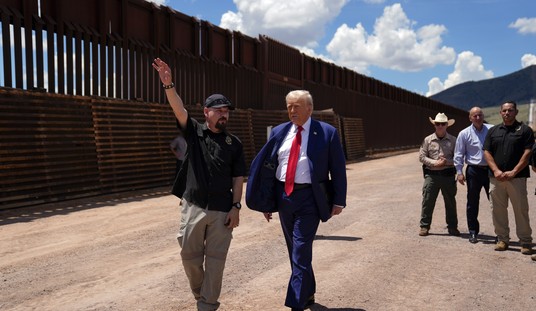President Obama and his team of White House advisors are wrong: no additional federal funding is needed to stimulate a federal construction boom that would launch job-creation in cities across the United States. What is needed, desperately, is no-cost, regulatory reform of the existing federal building process. Currently, the average cycle to conceive, design, fund and ultimately construct a federal building takes approximately 7 years. That’s just too long.
Few infrastructure projects move quickly through the federal government’s labyrinthine process because there are approximately twenty regulated hurdles that must be cleared before a project is considered "shovel ready".
As the Administrator of the U.S. General Services Administration during the Bush Administration, I had responsibility for building, maintaining, and managing approximately $550 billion in government hard assets, so I know all too well that the current, bureaucratic, approval process needlessly delays federal construction projects, creates confusion and anger among legislators with projects in their districts and, ultimately, drives up the cost to taxpayers.
American taxpayers were promised that the “critical infrastructure projects” to be funded by the $787 Billion-dollar, February 2009 stimulus were going to invigorate the economy and create 3.5 million jobs. But that didn’t happen. Tellingly, the most recent Bureau of Labor unemployment report for August 2010 shows unemployment has risen to 9.6% and that 15 million Americans are out of work.
Americans keep assembling more data points on the myth of the Obama Administration’s success, such as a stimulus that didn’t stimulate, mortgage reform that hasn’t solved the home mortgage crisis and job creation promises that haven’t materialized, confirming that Obama’s policies are wrong.
Recommended
Obama is a charismatic man and a polished public speaker, but he has a flawed understanding of how the federal government works and how the private sector works. Obama’s job creation efforts aren’t succeeding because Obama still seems to think that articulating a policy is the same as executing a policy.
At the time of the first stimulus, with a White House filled with former Legislative branch officials, the Obama Administration didn’t understand how executive branch federal agencies operate. They did not understand the government procurement process, nor the government construction process and were thus ill-prepared, leading Obama to make rosy-scenarioed promises that he has been unable to fulfill.
Unfortunately, Obama still does not seem to understand the inner-workings of the federal building construction process, or he would understand that many of the wickets that prevent construction projects from moving forward are areas where a straightforward, Executive Order, that doesn’t require congressional approval, would expedite the process.
The requirements-laden, prospectus approval process is one of the reasons why infrastructure projects take so long to get started. Moving from conception, to prospectus, to Congressional approval often takes as much as three years. Design, Bid and Award can take another two years with actual construction taking another two to five years.
Even more than funding, what is needed to get federal building projects moving is regulatory reform. For example, an Executive Order could reduce the time required for the State department to issue Presidential Permits for construction of border crossing points. An Executive Order could reduce the amount of time required for the government’s approval of FONSIs (Finding of No Significant Impact) on federal construction. Why not increase the number of times annually when building design and cost prospectuses are delivered to congress for approval? Or change the rules regarding small business participation and joint ventures in construction projects under $50 million dollars? The president could rescind the requirement for Project Labor Agreements (PLAs) which punish non-union, small construction businesses and often prevents them from bidding or performing federal construction work in their communities.
Federal construction projects, such as federal office buildings, federal court houses and land border ports of entry are ways to create jobs in local communities throughout the United States, since most of these types of projects utilize local labor, local, skilled craftsmen and local, licensed construction professionals, many of whom are small and minority businesses. But these projects don’t need more money; they need more understanding the federal construction process’ bottlenecks and more willing leadership in removing those bottlenecks.
Sadly, Obama doesn’t seem willing to provide the kind of innovative thinking and leadership that’s needed to create the jobs he promised so long ago.

























Join the conversation as a VIP Member